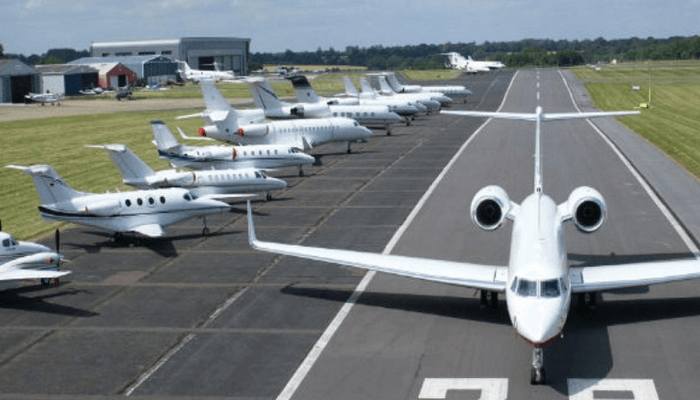Pilot Shortage Looms in Nigeria Over Insufficient Training Resources

Pilot shortages could soon affect Nigeria’s aviation sector as training at the International Aviation College (IAC), Ilorin, Kwara State, is hampered by a lack of trainer aircraft.
Over the weekend, a source close to the college told our correspondent that the school no longer had trainer aircraft to instruct its student pilots because of recent serious accidents involving its last surviving trainer aircraft.
In a phone chat with our correspondent, however, the college refuted the assertion, stating that it now has two operational planes for student pilot training.
Founded in 2011 by then-state governor Alhaji Abdulfatah Ahmed, the college had six trainer aircraft at its height, but according to people close to the college, it now does not have any operational aircraft for the flying school.
The Diamond DA 4O, Diamond DA 42, and helicopter were among the aircraft utilized for the college’s multi-engine rating classes.
In 2019, one of the trainer aircraft registered 5N-BHN also crashed although there was no indication that the aircraft had been put back into operation.
No fewer than 250 pilots qualified for the nation’s aviation industry through the college’s Private Pilot Licence (PPL) and Commercial Pilot Licence (CPL) programs.
Additionally, on Friday, May 23, 2025, a college-operated trainer plane crashed, injuring a student pilot.
At Ilorin International Airport, the incident happened on approach at Runway 05.
The sole aircraft the college possessed for training, according to our source, was severely destroyed in the terrible event.
The check flight had stalled, according to our source, because the serious mishap occurred during “a mock check flight” that was being prepared for the student pilot for a CPL check ride.
Furthermore, the source informed our correspondent that the college had applied for permission to buy an engine for one of the fleet’s aircraft so that it could be recommissioned for flight, but as of the time this report was filed, the college had not received permission from the state government to do so.
“The college is currently floating,” the person stated. The necessary test flights for its student pilots are not conducted by any of its aircraft. Normally, this is carried out in accordance with the instruction handbook, but since that occurrence on May 23, it has been put on hold.
Since the availability of trainer aircraft is unknown, several students who are scheduled to take off are waiting. However, in order to save the present circumstance, we are depending on the state government to step in.
Although he acknowledged that the college lacked operational aircraft, another source who also did not want his name to appear in print stated that the current state of affairs has not halted student training because the majority of them are presently enrolled in ground school.
Since we aren’t flying right now, the majority of the pupils are attending ground school. They’ll be flying again as soon as they’re done. Aircraft would be available by the time we began flying, the source stated.
The idea that the college lacked trainer aircraft was also refuted by Mr. Ajape Abdullahi, the IAC’s Head of Training.
Despite the terrible mishap to its trainer plane, Adbullahi told our correspondent over the phone that the college had been accepting and graduating students for the past two months.
After completing their CPL training successfully, he claims that IAC graduated three pilot students in June.
Before graduating in June, the students completed their practical training on the Diamond DA 42 trainer aircraft of the Nigerian College of Aviation Technology (NCAT), Zaria, according to Abdullahi, our correspondent.
The college currently has roughly 35 pilot students, including PPL and CPL who are in ground school, he added.
The Diamond DA 42, which is multi-engine equipment, is the only aircraft we do not currently have, he stated. We have a Memorandum of Understanding (MoU) with NCAT that allows us to share equipment, so keep that in mind.
As of right now, we have two Diamond DA 40 aircraft in our fleet that are useful for practical purposes, usually during our students’ final year. It’s still ground school for our pilot pupils. They will continue on to the fly line from there.
Additionally, our students can receive hands-on training in a functional simulator. The Civil Aviation Authority of Nigeria (NCAA) has granted the simulator its accreditation.
The PPL’s maximum training period is six months, which includes three months of ground school and a further three months in the fly line. However, this is mostly dependent on student performance and weather conditions. It typically lasts 18 months for the CPL, including 16 weeks for ground school and weeks for fly line instruction.
Read Also: ‘PDP Has Collapsed, Nothing Left to Destroy’ – Fayose Laments
In response, Dr. Alex Nwuba, Vice President of the Aviation Safety Round Table Initiative (ASRTI), stated that the college’s inability to have operational aircraft will impede the students’ ongoing education.
Nwuba suggested that the Kwara State government adequately fund the institution in order to save it from collapsing. He also suggested that the administration purchase extra aircraft at a reduced cost in order to keep training its student pilots.
According to him, it would result in a delay in their education, which is common in our educational system when pupils attend school for a set number of years but wind up staying longer for no fault of their own.
In the event that the institution actually does not have a trainer aircraft, the state government may step in to help. The college ought to continue. For this to be completed, it just comes down to priority.
IAC management was also urged by aviation industry expert Engr. Chukwudi Amokwu to move its flying students to NCAT for fly line.
The lack of trainer planes at the college, according to Amokwu, signifies that “the flying school of the college is gone and it is the major school that sustains them.”
It is required of you to have a specific number of hours in order to be eligible for the PPL and CPL. I estimate the PPL to have around six flying hours, but the CPL must have more than 200.
Alternatively, they could use a simulator to carry out the training. Without the aircraft, they are unable to obtain a license. It is the foundation of any flying school,” he continued.
He clarified that the college might find it challenging to obtain a new trainer aircraft because of bureaucracy and suggested that the management repair some of the fleet’s non-operational aircraft for student training.
“Zaria instructors can still come and complete the training for them by writing the NCAA,” he continued.





